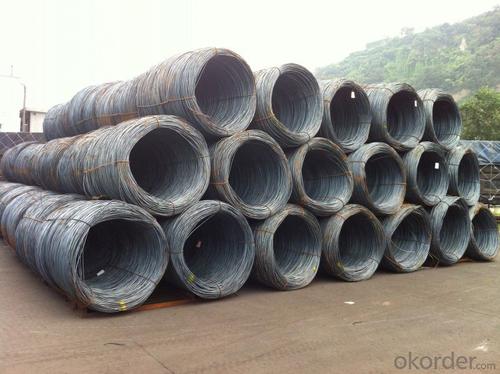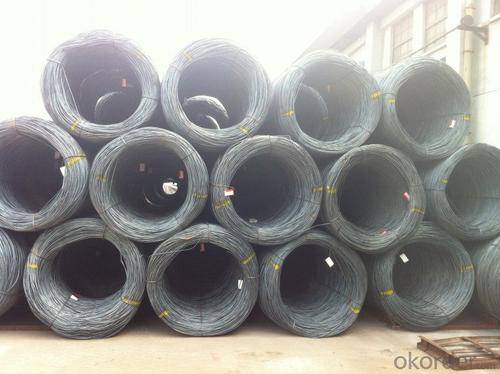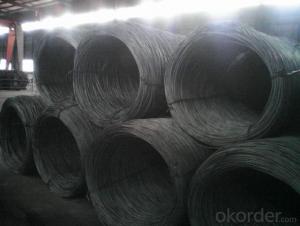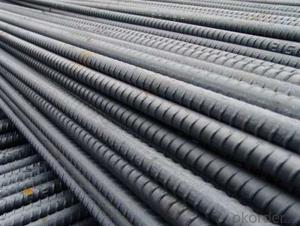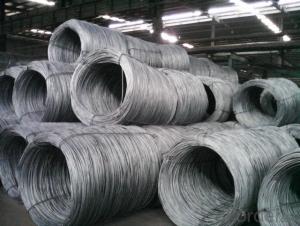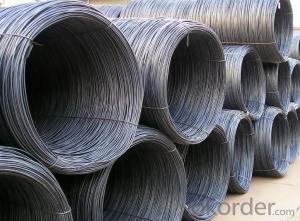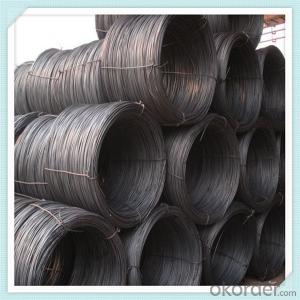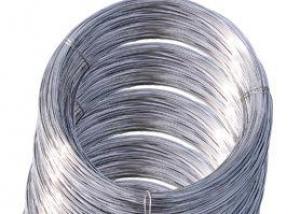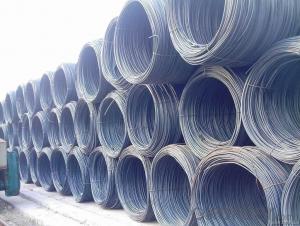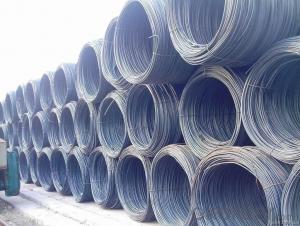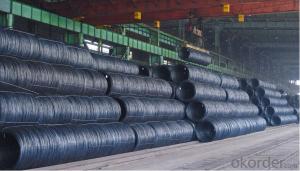Hot Rolled Wire rods with highest quality and lowest price
- Loading Port:
- Tianjin
- Payment Terms:
- TT OR LC
- Min Order Qty:
- 25 m.t.
- Supply Capability:
- 10000 m.t./month
OKorder Service Pledge
OKorder Financial Service
You Might Also Like
Product Description:
OKorder is offering Carbon Steel Wire Rod at great prices with worldwide shipping. Our supplier is a world-class manufacturer of steel, with our products utilized the world over. OKorder annually supplies products to European, North American and Asian markets. We provide quotations within 24 hours of receiving an inquiry and guarantee competitive prices.
Product Applications:
Carbon Steel Wire Rod are ideal for structural applications and are widely used in the construction of buildings and bridges, and the manufacturing, petrochemical, and transportation industries.After hot-rolled the products shaped into coil and delivery as finished product, including round, square, rectangular, hexagonal and so on. Since most of the products are round, it is generally called wire rod. Carbon steel wire rod is widely used in construction and manufacturing. Carbon steel wire rod is mainly used for reinforcement of reinforced concrete and welded structure or reprocessed (roberts , nail, etc.) materials, especially used to produce wire drawing, welding electrode, nails, spring, electronic, precise machinery parts and so on.
Product Advantages:
OKorder's Carbon Steel Wire Rod are durable, strong, and resist corrosion.
Main Product Features:
· Premium quality
· Prompt delivery & seaworthy packing (30 days after receiving deposit)
· Corrosion resistance
· Can be recycled and reused
· Mill test certification
· Professional Service
· Competitive pricing
Product Specifications:
Chemical Composition:
Please kindly find our chemistry of our material based on SAE1006/SAE1008 as below for your information
Grade | Chemical Composition (%) | |||||
C | Mn | S | P | Si | B | |
SAE1006B | 0.03~O.07 | 0.32max | 0.045max | 0.040max | 0.30max | 0.0008min |
Mechanical properties | ||||||
Yield strength(N/mm2) | Tensile strength(N/mm2) | Elongation (%) | ||||
250-280 | 350-380 | ≥32 | ||||
Grade | Chemical Composition (%) | |||||
C | Mn | S | P | Si | B | |
SAE1008B | 0.10max | 0.3~0.50 | 0.050max | 0.040 max | 0.15max | 0.0008 min |
Mechanical properties | ||||||
Yield strength(N/mm2) | Tensile strength(N/mm2) | Elongation (%) | ||||
≥195 | 315-430 | ≥30 | ||||
FAQ:
Q1: Why buy Materials & Equipment from OKorder.com?
A1: All products offered byOKorder.com are carefully selected from China's most reliable manufacturing enterprises. Through its ISO certifications, OKorder.com adheres to the highest standards and a commitment to supply chain safety and customer satisfaction.
Q2: How do we guarantee the quality of our products?
A2: We have established an advanced quality management system which conducts strict quality tests at every step, from raw materials to the final product. At the same time, we provide extensive follow-up service assurances as required.
Q3: How soon can we receive the product after purchase?
A3: Within three days of placing an order, we will begin production. The specific shipping date is dependent upon international and government factors, but is typically 7 to 10 workdays.
Image
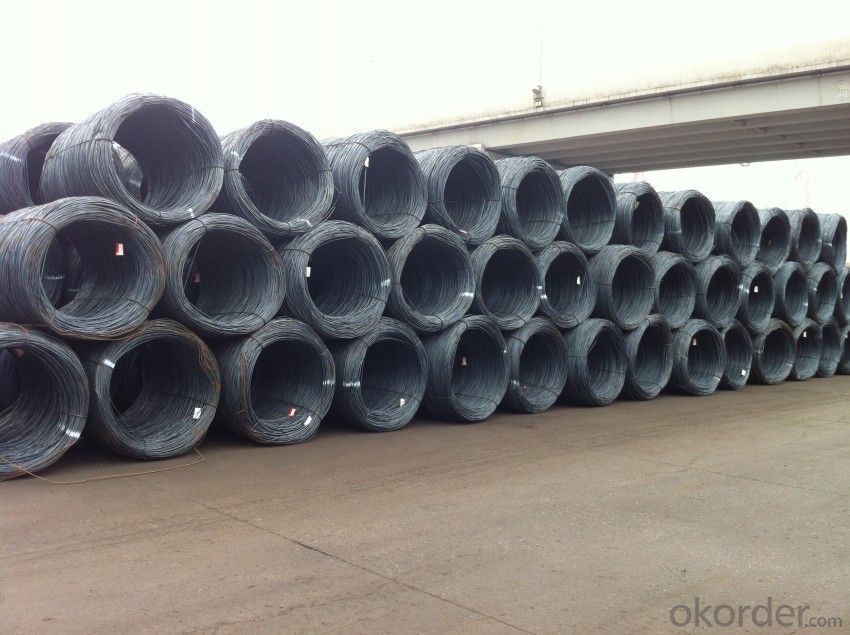
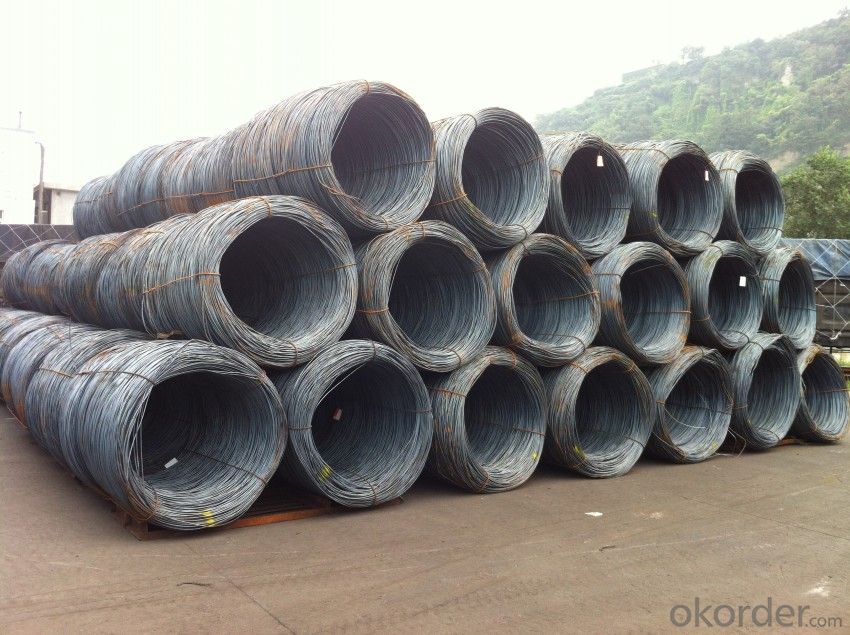
- Q: How are steel wire rods used in the production of wire ropes for cranes?
- Steel wire rods are a crucial component in the production of wire ropes for cranes. These rods serve as the raw material for the wire rope manufacturing process. To begin with, the steel wire rods are carefully selected based on their mechanical properties, such as strength and durability. The rods go through a series of processes, including cleaning, heating, and drawing, to convert them into wire strands. Once the wire strands are formed, they are wound together to create the wire rope. This process involves twisting multiple strands around a central core, usually made of fiber or steel. The wire strands are arranged in a helical pattern, which enhances the strength and flexibility of the wire rope. The steel wire rods used in the production of wire ropes for cranes are specifically chosen for their high tensile strength. This ensures that the wire ropes have the ability to withstand heavy loads and extreme working conditions. The strength of the steel wire rods directly impacts the overall strength and safety of the wire ropes. Additionally, the steel wire rods undergo various quality control measures during the manufacturing process to ensure their reliability and consistency. These measures include testing for tensile strength, breaking load, and other performance parameters. Once the wire ropes are manufactured using the steel wire rods, they are then used in cranes for a variety of applications. Wire ropes are essential for lifting and moving heavy loads, providing stability and control during crane operations. They play a vital role in safely and efficiently lifting, lowering, and suspending loads in various construction, industrial, and maritime settings. Overall, steel wire rods are integral to the production of wire ropes for cranes, as they provide the necessary strength, durability, and reliability required in demanding working environments.
- Q: What are the common production processes for tungsten-coated steel wire rod?
- The common production processes for tungsten-coated steel wire rod include wire drawing, cleaning and degreasing, tungsten coating, and heat treatment.
- Q: What are the weight and length specifications for steel wire rods?
- The weight and length specifications for steel wire rods can vary depending on the specific requirements and standards set by different industries. However, in general, steel wire rods are commonly available in lengths ranging from 5.5 meters (18 feet) to 15 meters (49 feet). The weight of steel wire rods can also vary, but they are typically sold in bundles weighing between 1.5 metric tons to 3 metric tons. It's important to note that these specifications can be customized to meet the specific needs of customers, so it's always advisable to consult with the supplier or manufacturer for accurate and up-to-date information regarding weight and length specifications for steel wire rods.
- Q: How are steel wire rods used in the manufacturing of fasteners?
- Fasteners, including bolts, screws, and nails, rely on steel wire rods as a vital component in their production. Steel wire rods serve as the raw material, imparting the strength and durability required for these fasteners. The manufacturing process commences with the utilization of steel wire rods, typically made from carbon or alloy steel. These rods undergo a hot rolling process, where they are heated and passed through a series of rollers to achieve the desired shape and size. The resulting wire rods then undergo further processing to meet the specific requirements for fastener production. One of the primary applications of steel wire rods in fastener manufacturing is for the production of bolts and screws. The wire rods are cut into specific lengths and undergo various operations, such as heading, threading, and heat treatment. Heading involves shaping the head of the bolt or screw, while threading creates the ridges or grooves necessary for proper installation. Heat treatment is often employed to enhance the strength and hardness of the fastener. Steel wire rods are also utilized in the production of nails. The rods are drawn to the desired diameter and cut into appropriate lengths. The ends of the wire are then sharpened, and the nails are formed through a process called pointing. Pointing involves creating a sharp tip on one end of the wire, facilitating easy penetration into materials. In addition to bolts, screws, and nails, steel wire rods find use in the production of other fasteners, such as rivets, cotter pins, and clips. These fasteners are essential across various industries, including construction, automotive, aerospace, and furniture. Overall, the significance of steel wire rods in fastener manufacturing cannot be overstated. They provide the necessary strength, durability, and adaptability required for joining and securing objects together. Serving as the foundation for the production of various fastener types, steel wire rods enable the construction of robust and reliable structures.
- Q: What are the different surface roughness measurement methods for steel wire rod?
- Steel wire rod can be assessed for its surface quality and smoothness using various methods. These methods are crucial for applications like wire drawing, machining, and coating. The commonly used methods for measuring surface roughness of steel wire rod include: 1. Contact Profilometry: This method involves physically scanning the wire rod's surface using a stylus or probe. The stylus moves across the surface and records any irregularities. The data obtained can then be used to calculate roughness parameters such as Ra and Rz. 2. Optical Profilometry: This method utilizes optical techniques to measure surface roughness. It involves projecting light onto the wire rod's surface and capturing the reflected light with a camera or other optical sensors. The captured data is then analyzed to determine roughness parameters. 3. Laser Scanning: For non-contact measurement, laser scanning is used. A laser beam is directed at the wire rod's surface, and the reflected beam is analyzed to calculate roughness parameters. This method provides highly accurate results and detailed surface topography information. 4. Atomic Force Microscopy (AFM): AFM is a high-resolution imaging technique that measures surface roughness at the nanoscale level. It involves scanning a sharp tip across the surface and detecting the interaction forces between the tip and the surface. The collected data is used to create a detailed topographic image and calculate roughness parameters. 5. Electromagnetic Eddy Current: This method employs electromagnetic fields to measure surface roughness. Eddy currents are induced in the wire rod's surface, and the changes in these currents are measured and analyzed to determine roughness parameters. This technique is particularly useful for measuring roughness on conductive materials. These surface roughness measurement methods have their own advantages and limitations. The choice of method depends on factors such as the required accuracy, speed, and specific characteristics of the steel wire rod being measured.
- Q: What are the future prospects for the steel wire rod industry?
- The future prospects for the steel wire rod industry are promising, with steady growth anticipated due to increasing demand from various sectors such as construction, automotive, and manufacturing. The industry is expected to benefit from infrastructure development projects, urbanization, and the growing emphasis on renewable energy. Technological advancements and innovation in production processes will further enhance efficiency and product quality. However, challenges such as fluctuating raw material prices and competition from substitute materials need to be addressed to ensure sustained growth in the steel wire rod industry.
- Q: What are the advantages of using steel wire rod in manufacturing?
- The advantages of using steel wire rod in manufacturing are its high strength, durability, and versatility. Steel wire rod offers excellent tensile strength, making it suitable for a wide range of applications such as construction, automotive, and machinery. It can withstand heavy loads and provides stability, ensuring the longevity of the finished products. Additionally, steel wire rod is flexible and malleable, allowing for various shaping and forming processes during manufacturing. Its corrosion resistance properties also make it ideal for outdoor or harsh environments.
- Q: What are the common packaging materials used for steel wire rod coils?
- The common packaging materials used for steel wire rod coils are wooden pallets, steel straps, and plastic wrapping.
- Q: How is steel wire rod used in the production of wire mesh for animal enclosures?
- Steel wire rod is an essential element in manufacturing wire mesh for animal enclosures, as it serves as the primary material from which the wire mesh is formed. The wire rod, typically composed of low carbon steel, undergoes a series of processes to achieve the desired wire mesh. To begin, the steel wire rod is drawn through a set of dies to reduce its diameter and increase its length. This wire drawing process ensures that the wire rod possesses the appropriate thickness and strength required for its intended use in animal enclosures. Once the wire has been drawn, it is often galvanized to enhance its durability and resistance to corrosion. Galvanization entails immersing the wire in molten zinc, resulting in a protective zinc coating that effectively prevents rust and prolongs the lifespan of the wire mesh. Subsequently, the galvanized wire is either woven or welded together to form the wire mesh structure. Woven wire mesh is created by interlocking the wires in a crisscross pattern, resulting in a robust and flexible mesh. Conversely, welded wire mesh is fashioned by joining the wires together at their intersections, yielding a more rigid and stable mesh. The wire mesh produced from steel wire rod offers several benefits for animal enclosures. Its strength and durability enable it to withstand the impact and pressure exerted by animals, ensuring their safe containment. Additionally, the small gaps between the wires provide ventilation and visibility, allowing animals to see their surroundings while maintaining a secure enclosure. In conclusion, steel wire rod plays a crucial role in the production of wire mesh for animal enclosures, providing the necessary strength, durability, and security to create a safe and reliable enclosure for various types of animals.
- Q: What is the composition of a steel wire rod?
- The primary composition of a steel wire rod consists of iron and carbon, along with small amounts of other elements like manganese, silicon, and sulfur. Iron, being the main component, imparts strength and durability to the wire rod. Carbon is added to enhance the steel's hardness and tensile strength, thereby making it suitable for diverse applications. Manganese improves the overall strength and ductility of the wire rod, while silicon aids in enhancing its corrosion resistance. Sulfur is typically present in minimal quantities to facilitate the steel's machinability during the manufacturing process. The specific composition of a steel wire rod may vary depending on the desired properties and intended use.
Send your message to us
Hot Rolled Wire rods with highest quality and lowest price
- Loading Port:
- Tianjin
- Payment Terms:
- TT OR LC
- Min Order Qty:
- 25 m.t.
- Supply Capability:
- 10000 m.t./month
OKorder Service Pledge
OKorder Financial Service
Similar products
Hot products
Hot Searches
Related keywords



